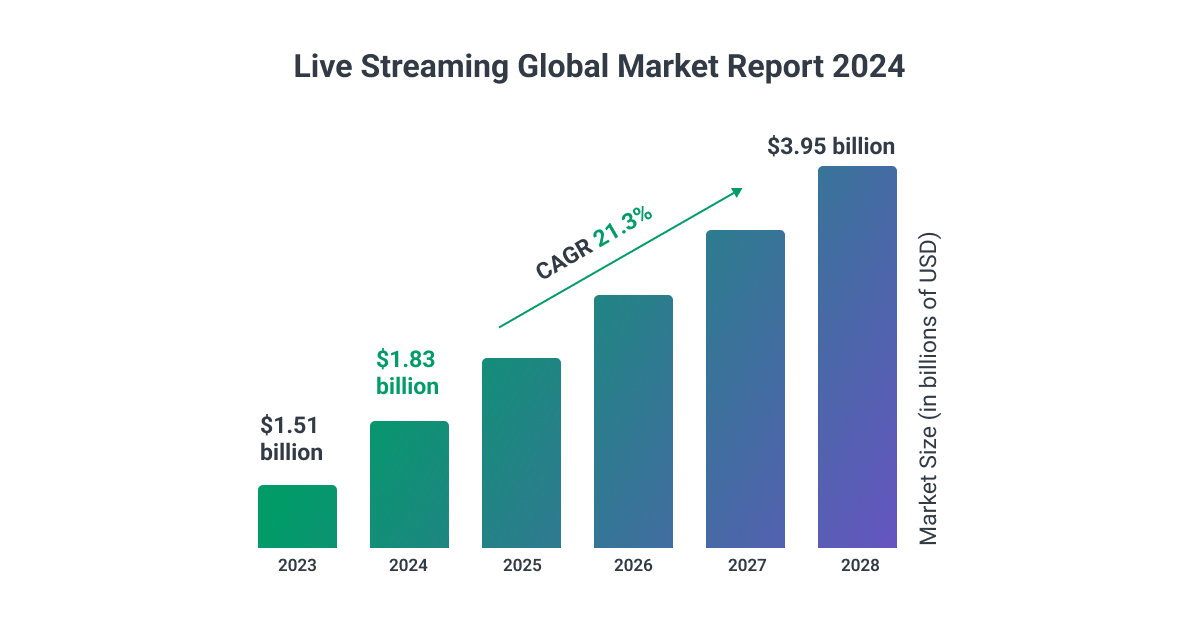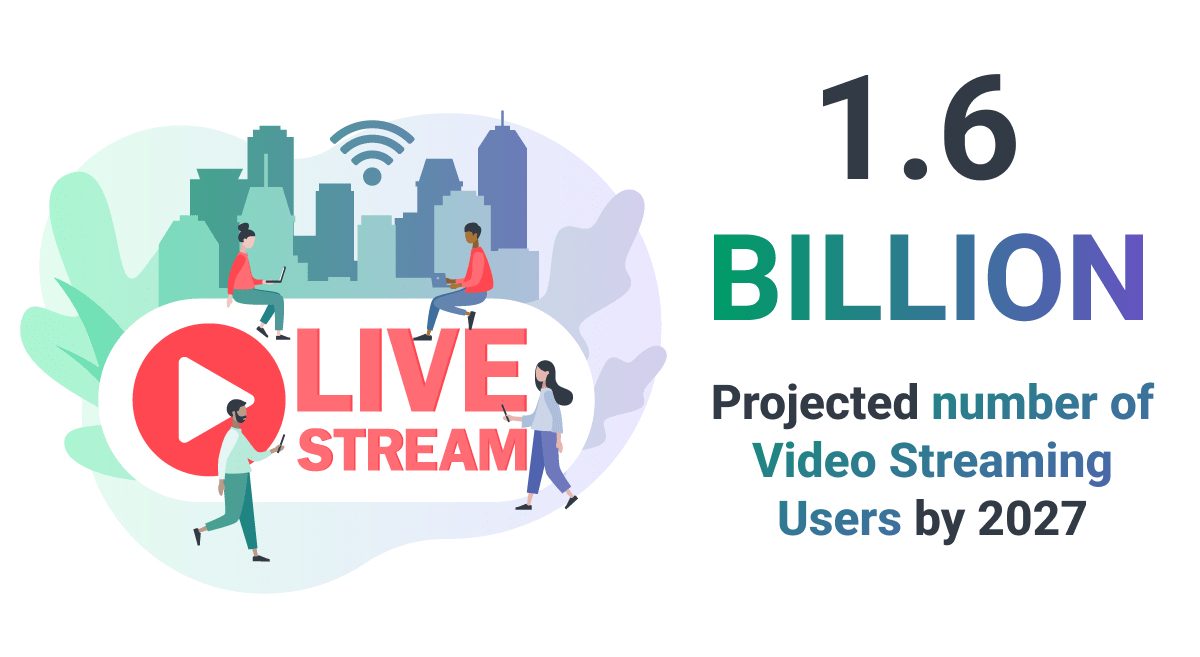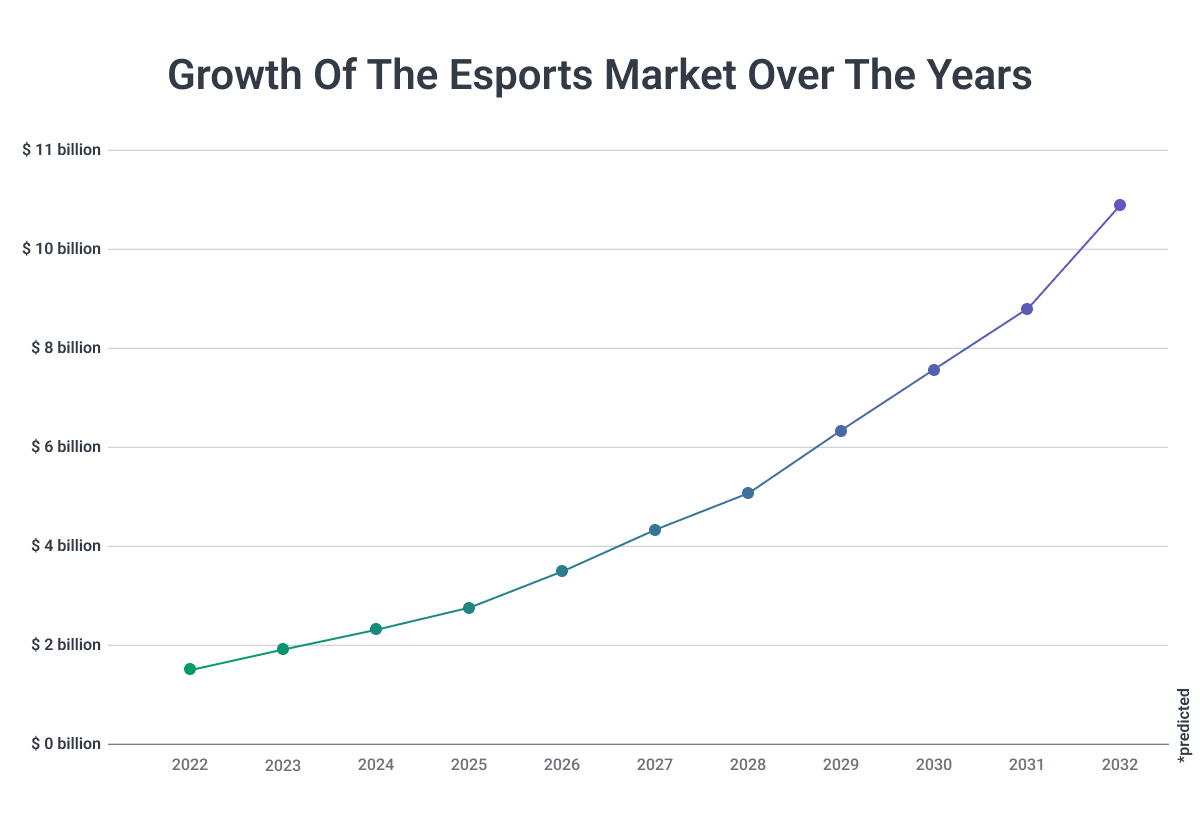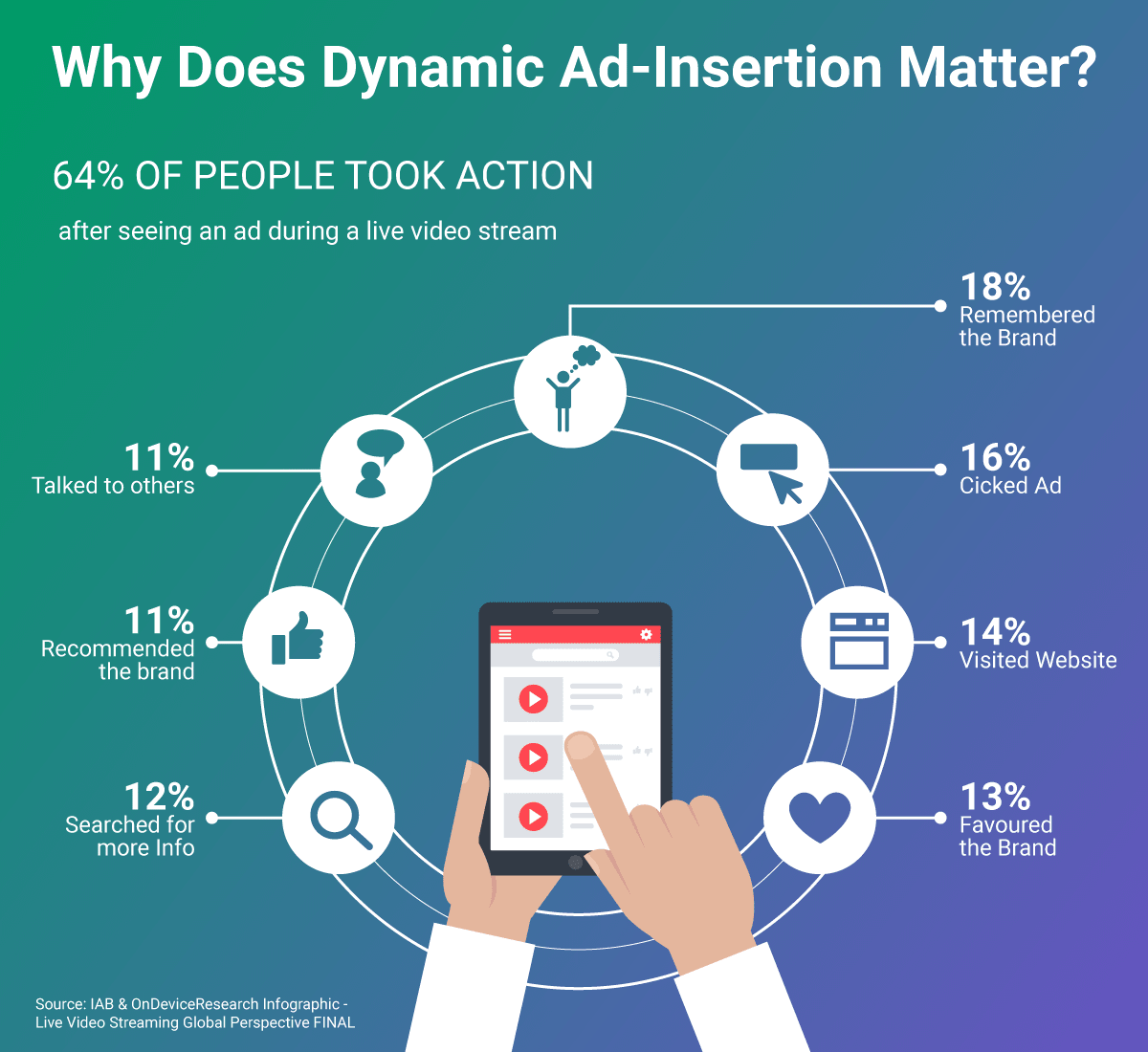In recent years, live streaming has showcased the diverse paths the industry can take, with some trends remaining consistent while others have sparked a global transformation.
Live Streaming Market Overview
The rise in live streaming popularity can be attributed to two key factors: the growing preference for video as a primary content format and the increased time people spent at home during lockdowns. Platforms like YouTube and Facebook experienced substantial growth in live viewership during this period.
More recently, platforms such as Twitch, Instagram, and TikTok have gained significant traction, attracting diverse audiences and reshaping the live streaming landscape, further solidifying video content's dominance in how people engage with and consume information online.
Social platforms continue to be the key source of live video content where brands and influencers can connect with wider audiences. The growing popularity of eSports and video games is also noticeable as live video streaming gained greater viewership in all age groups.
With the global live streaming industry reaching projected to rise to $534 billion by 2030, it's clear that it will be one of the most predominant ways to consume content. Overall, 2026 will bring much-anticipated growth in many ways, so let’s take a closer look at the top streaming trends to keep your eyes on this year.

Live Stream eCommerce is on the Rise
Instead of interacting with their audience through social media influencers, brands are now focusing on promoting and selling their merchandise through live video shopping. eCommerce live streaming has become a major trend and is expected to continue to grow in popularity in 2026.
Key ecommerce platforms for livestream shopping:
- Facebook Live Shopping: Enables merchants to host live events and showcase their products.
- YouTube Live Shopping: Gives creators a platform to create a real-time customer experience.
- BigCommerce: Offers shoppable livestream integration via the eStreamly app.
- Amazon Live: A Place for immersive social commerce interactions.
- TikTok Live Shopping: Allows viewers and creators to interact in real time, with features like effects, multi-guest hosting, and live gifts.
Pinterest made a big move to engage in live-stream eCommerce, which has already gained huge traction. Users are now able to showcase their products so their audience can easily purchase them. Live shopping and shop exclusive deals will offer better prices to attract a new audience and get them interested in buying trending products.

Other platforms are also jumping into the live commerce trend. Instagram launched its Live Shopping feature, letting influencers and brands sell products during live streams with seamless in-app purchasing. Similarly, TikTok Shop has partnered with major brands to host live shopping events, blending entertainment with commerce to capture younger audiences.

Growing Monetization of OTTs
Over-The-Top (OTT) media services were soaring high even before the pandemic, with hundreds of millions of subscribers worldwide. The popularity of platforms like Disney+, Netflix, Hulu, Amazon Prime, and HBO stems from the subscription model that includes limitless access to video content.
With more original content, these platforms are attracting younger audiences that are helping them expand by driving subscriber interactions on big social media platforms.
Another way for OTT platforms to continue growing is by partnering with mobile operators to generate additional revenue. This model has proved successful as more mobile users activate their free subscriptions and quickly move from basic to premium accounts.
Strategic Approaches to Gamification
Gaming broadcasters are fostering greater social interaction and incorporating mixed-media experiences to captivate younger audiences. The surge in viewership during COVID-19 lockdowns propelled platforms like Twitch, YouTube, and Facebook Gaming to unprecedented growth, with many viewers continuing to engage post-pandemic.
Recognizing the value of their tech-savvy audiences, Twitch has introduced features that simplify live broadcasting and support diverse content types. Broadcasters have also prioritized real-time video delivery, interactive elements, and gamification to enhance the viewing experience. Real-time chat integration and seamless sharing options enable audiences to comment on content as they watch and share it across their favorite social media platforms, creating a more dynamic and connected community.

When it comes to e-sports, both earnings and viewership are quickly on the rise, especially since the beginning of the pandemic. It is projected that more e-sport enthusiasts, as well as occasional viewers, will be engaging in e-sport live streaming in the coming years.
Some NBA teams have even decided to simulate games on NBA 2K and stream them on Twitch. Those games drew hundreds of thousands of viewers and showed great potential for similar content in the future. With more millennials and Gen Zs opting for video and gaming subscriptions than cable and traditional TV, it becomes clear that we are seeing the new direction the industry is heading.

Source: IAB & OnDeviceResearch Infographic - Live Video Streaming Global Perspective
While Dynamic Ad Insertion (DAI) is not a new feature, it was primarily operated through proprietary solutions in the past. Third-party cookies are a well-established way of targeting ads across online platforms.
Currently, DAI can personalize the end-user experience, beat ad blockers, and ensure seamless transitions between content and advertisements. As low-latency services incorporate DAI, all these personalization models are slated to rise in 2025.
The Benefits of Using Short-Form Content
Short-form content is a great way for digital creators to recycle and reuse their content. Social media platforms make it easy to publish this type of content, and wider audiences can interact with and share it.
Cropping longer videos and promoting them through short-form content becomes a piece of quick-to-point information for potential viewers. By simply selecting the most valuable segments to hook viewers’ attention, digital creators can attract a new audience to their greater content collection.

Expansion of IoT Video Streaming
The Internet of Things (IoT) streaming is revolutionizing various industries and everyday life. With more devices connecting to the Internet every day, IoT technologies are shaping how businesses operate and how people interact with the world. By 2025, the number of connected devices is expected to exceed 75 billion, underscoring the transformative impact IoT will have on economies and societies.
In consumer applications, IoT video streaming has seen significant adoption in smart home devices like doorbell cameras, security systems, and pet monitors. By 2026, the global smart home market is expected to surpass $222 billion, driven by innovations in IoT and the widespread rollout of 5G networks, which will enhance connectivity and performance across devices.
One of the largest and fastest-growing IoT streaming markets is the automotive sector. IoT-enabled vehicles are estimated to reduce accidents caused by human error by up to 25%, according to the World Health Organization, as they integrate advanced safety features like real-time hazard detection and predictive analytics.
By 2030, the global market for connected vehicles is projected to reach $225 billion, paving the way for widespread adoption of autonomous driving and more efficient transportation systems.
AI in Livestreaming
AI is reshaping the live streaming landscape by enhancing personalization and engagement like never before. Advanced AI algorithms analyze user behavior in real-time, enabling platforms to deliver highly tailored content recommendations that keep viewers hooked. AI-powered chat moderation and real-time translation features also foster more inclusive and interactive live experiences.
or businesses, AI-driven analytics provide actionable insights into audience preferences, paving the way for smarter content strategies and monetization models. With AI at the forefront, live streaming is becoming more immersive, efficient, and globally accessible.
Keep Up-to-Date on Livestreaming Trends
Streaming has transformed from an entertainment platform into a driving force across industries like esports, shopping, and video.
Staying ahead of the curve is crucial—and at Softjourn, we understand live stream trends and can help you enhance your platform with innovative features or scale your streaming capabilities. Contact us to get started.
















